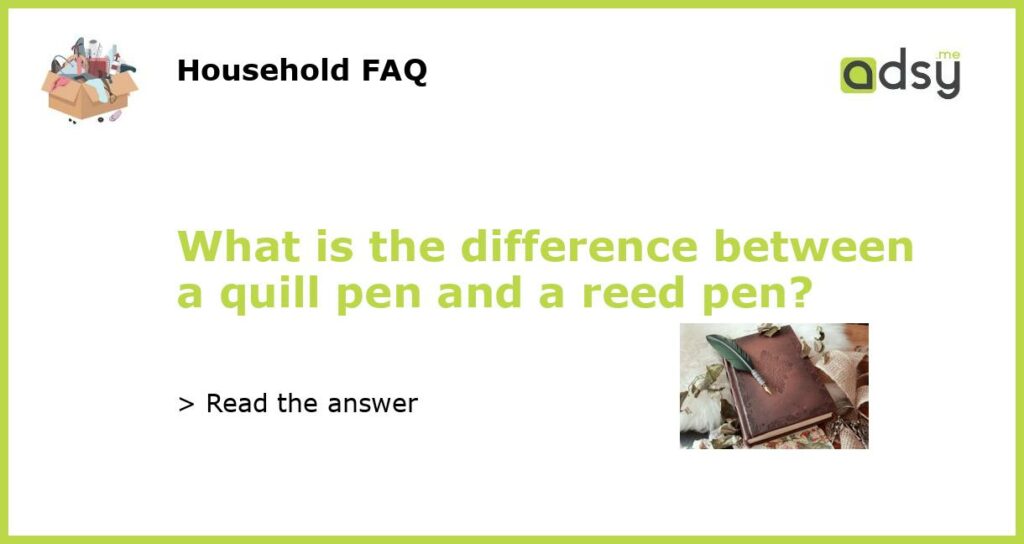What is a quill pen?
A quill pen is a writing instrument made from a feather of a large bird, such as a goose or swan. In the Middle Ages, the quill pen was the most popular writing tool, and it continued to be used until the mid-19th century. The feather was cut to a point and sharpened, and then the writing end was dipped into ink before use.
What is a reed pen?
A reed pen is a writing instrument made from a reed plant. It is also known as a cane pen and was widely used in ancient times by Egyptians, Greeks, and Romans. A reed pen is made by cutting a section of the reed, splitting it down the middle, and then carving one end into a point. The writing end is then dipped into ink before use.
What is the difference between a quill pen and a reed pen?
One of the main differences between a quill pen and a reed pen is the material they are made from. A quill pen is made from a feather, while a reed pen is made from a reed plant. Another difference is the nib shape – a quill pen has a pointed nib, while a reed pen has a flat nib. The ink flow is also handled differently – with a quill pen, ink is absorbed into the hollow shaft of the feather, while with a reed pen, ink flows down the channel created by the split reed.
Which one is better to use?
Both quill pens and reed pens have their pros and cons. Quill pens have a lot of flexibility and can create a wide range of line widths, but they need to be re-inked frequently. Reed pens, on the other hand, have less flexibility but hold more ink, making them useful for long writing sessions. Ultimately, the choice between the two comes down to personal preference and the intended use.
Do people still use quill and reed pens today?
While modern writing tools like ballpoint pens and digital devices are more commonly used today, quill and reed pens are still used by calligraphers and artists for their unique line quality and historical significance. Some people also find them to be a fun and tactile way to connect with the past and add a touch of elegance to their writing.






